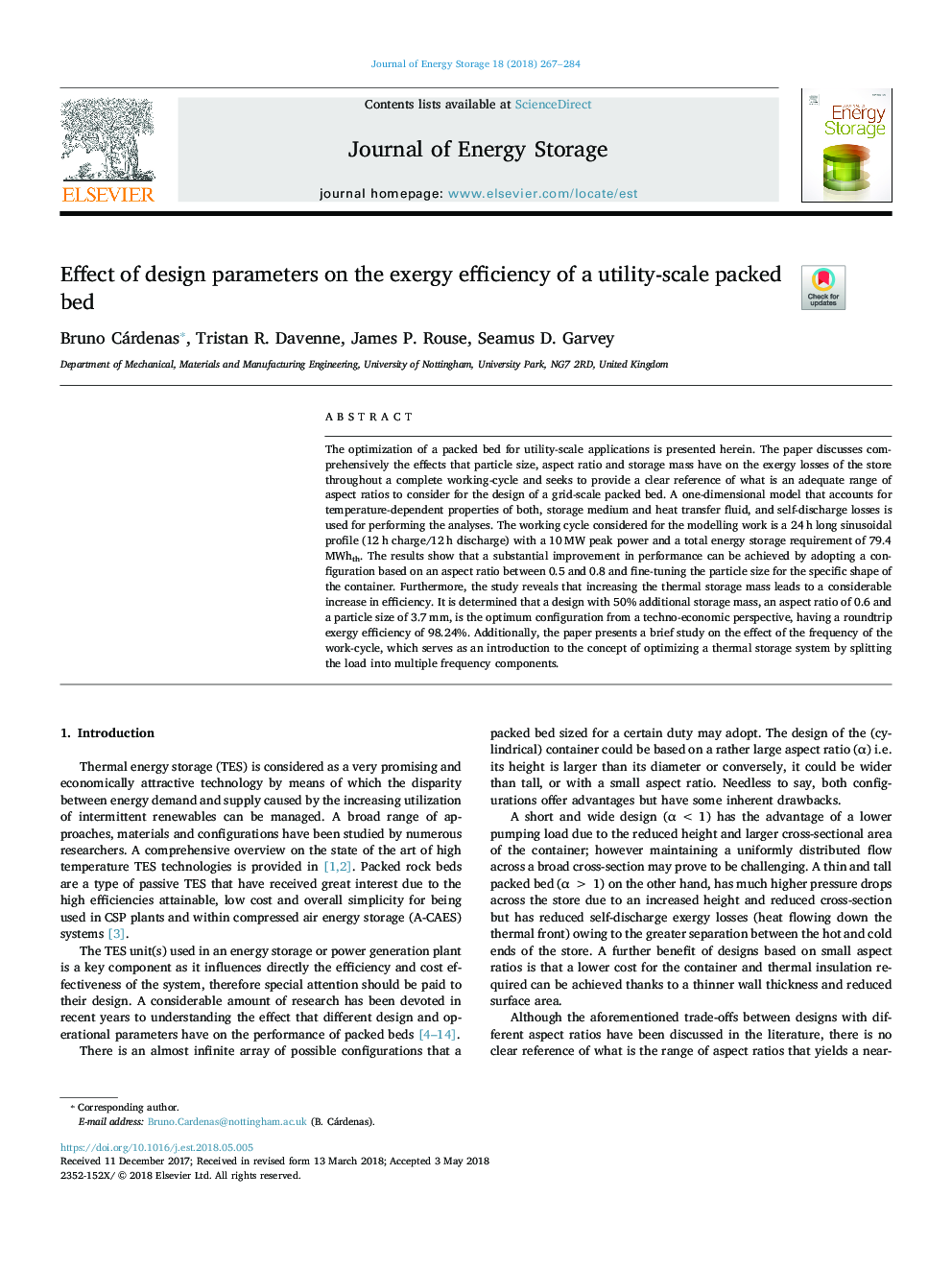| Article ID | Journal | Published Year | Pages | File Type |
|---|---|---|---|---|
| 7539803 | Journal of Energy Storage | 2018 | 18 Pages |
Abstract
The optimization of a packed bed for utility-scale applications is presented herein. The paper discusses comprehensively the effects that particle size, aspect ratio and storage mass have on the exergy losses of the store throughout a complete working-cycle and seeks to provide a clear reference of what is an adequate range of aspect ratios to consider for the design of a grid-scale packed bed. A one-dimensional model that accounts for temperature-dependent properties of both, storage medium and heat transfer fluid, and self-discharge losses is used for performing the analyses. The working cycle considered for the modelling work is a 24â¯h long sinusoidal profile (12â¯h charge/12â¯h discharge) with a 10â¯MW peak power and a total energy storage requirement of 79.4 MWhth. The results show that a substantial improvement in performance can be achieved by adopting a configuration based on an aspect ratio between 0.5 and 0.8 and fine-tuning the particle size for the specific shape of the container. Furthermore, the study reveals that increasing the thermal storage mass leads to a considerable increase in efficiency. It is determined that a design with 50% additional storage mass, an aspect ratio of 0.6 and a particle size of 3.7â¯mm, is the optimum configuration from a techno-economic perspective, having a roundtrip exergy efficiency of 98.24%. Additionally, the paper presents a brief study on the effect of the frequency of the work-cycle, which serves as an introduction to the concept of optimizing a thermal storage system by splitting the load into multiple frequency components.
Related Topics
Physical Sciences and Engineering
Energy
Energy (General)
Authors
Bruno Cárdenas, Tristan R. Davenne, James P. Rouse, Seamus D. Garvey,
